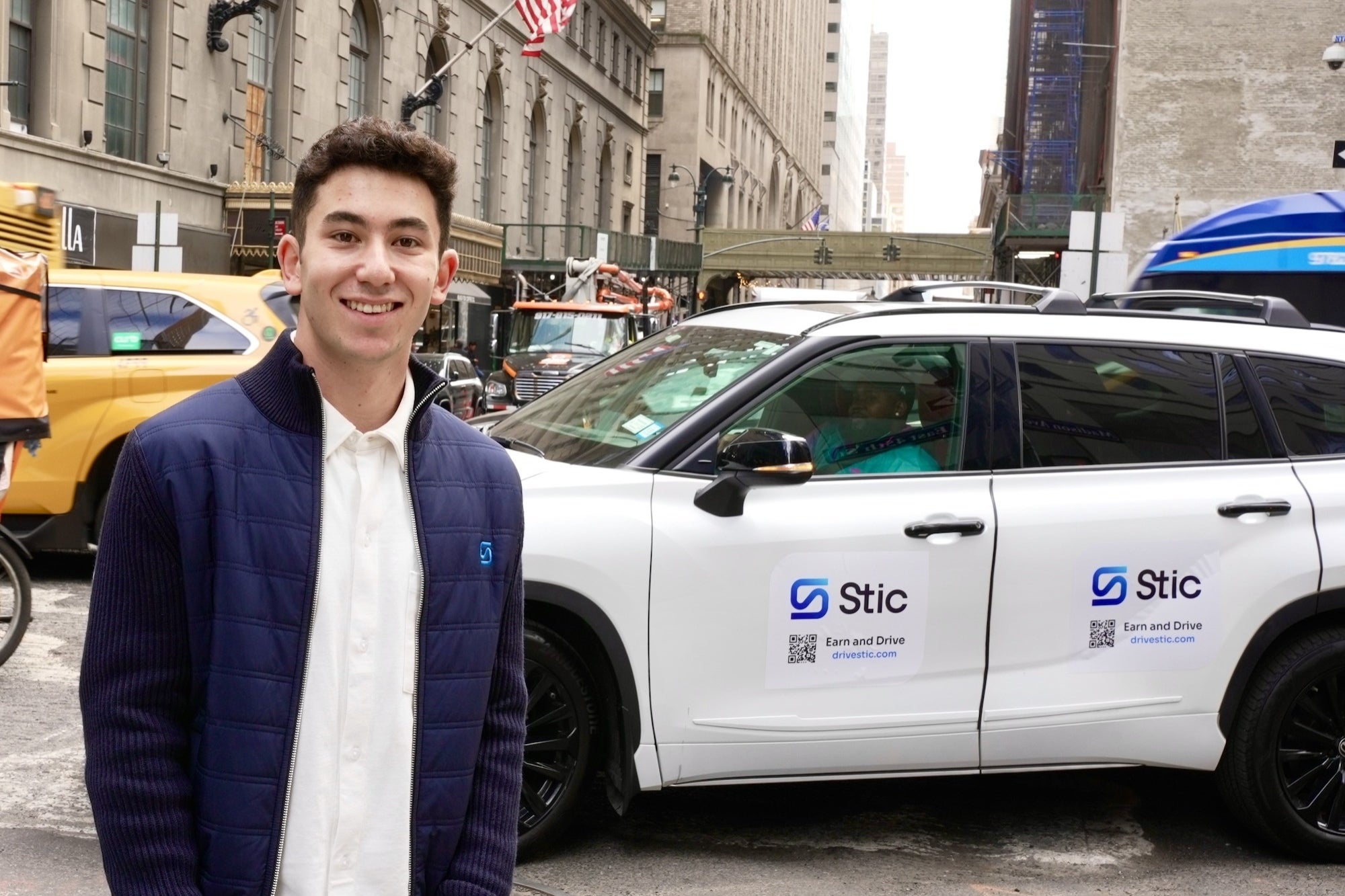
Opinions expressed by Entrepreneur contributors are their own.
Today, the 21-year-old Adam Cohen is the CEO and founder of The sticka fast-growing ad tech startup valued at over $16 million. But just a year ago, he was just another college student struggling to find his way in the world. “When I was at UCLA, I didn't know what I wanted to do,” Cohen admits. “I didn't even like what I was studying.” Then, one fateful day, he was leaving the Equinox sauna while reading Wall Street Journal when everything changed.
A sign on the road
The story behind the Stic's conception sounds almost like divine intervention. Cohen was reading an article about advertising being “dead” when his Uber pulled up with a magnet on the side promoting a nail tech business, complete with a phone number. “It grabbed my attention right away,” says Cohen. This simple sign sparked an idea: what if drivers could supplement their income by placing advertisements on their cars?
He jumped into the Uber and began bombarding the driver with questions about how many miles she drives in a day. She told him it was about 100 miles a day, or 3,000 miles a month, with about 70% of those miles paid for by Uber and delivery services. “I pointed out that she was driving 30 miles a day for free and asked her if she would be interested in getting paid for those miles by putting an advertising magnet on her car,” says Cohen. Her response? “Hell yeah!”
Fast lane to profit
Stic isn't the only ad tech startup focusing on out-of-home (OOH) advertising. But its user-friendly model sets it apart from other companies in the space. “We send them the sticker for free, they put it on their car, and then all they have to do is start driving,” says Cohen. Once the mobile ad is applied, drivers activate Stic's app, which tracks every mile driven, allowing advertisers to reach specific markets and enabling drivers to earn passive income based on mileage – up to $0.14 per mile . Unlike its competitors, which often require drivers to pay upfront fees — sometimes $125 just to get a screen or $95 for a coil — Stic lets drivers earn money without spending any.
Cohen explains the pitfalls of traditional car ad models: Drivers pay out of pocket and face long setup times, often spending six to eight hours wrapping their cars, only to exchange ads after a week. “It's inefficient,” Cohen says, referring to the business model of his competitors. “You only earn money if you stay in these designated areas for eight hours, and if you don't, you don't get paid.
For high-mileage drivers, such as those who work for ride-sharing services, the earning potential with Stic is significant, offering a new way to monetize daily rides and participate in the gig economy . “There are people where I'm from in LA who drive 80 miles a day just to get to work,” Cohen says. “They can also throw in a sticker and earn extra money.”
Gas blow
Cohen attributes his rapid success to the former PayPal CEO and billionaire Peter ThielThe philosophy of “Zero to One”. The philosophy argues that the most valuable companies are those that create something new rather than trying to be the best version of an existing thing. Cohen believes his company falls under that unique category. “If I wanted to start a sunglasses company, I could just Google how to do it: find a manufacturer, design the product, find a distributor and so on,” says Cohen. “But with Stic, there was no plan.”
He quotes Uber as a successful example of this philosophy, explaining how Uber was not revolutionary because of the idea of ride sharing, but rather because of the autonomy it provided to drivers. “You don't have to go get a whole taxi medallion and get a cab and do all this other crazy expense,” Cohen says. “Just submit your driver's license and you're approved. Now, you can drive and earn income you never could before for free. That's why Uber took out taxis.”
But Cohen didn't just borrow Uber's concept, he also built Stic with an API-driven machine learning platform that tracks movement patterns, similar to how giant time-travel maps search real. This technology detects factors such as pedestrians, cyclists, buses and surrounding vehicles. According to him, this system is more effective than traditional billboards, as the moving nature of advertisements places them in unexpected places, attracting people's attention in a more impactful way. “We're giving drivers a no-brainer,” says Cohen. “We're basically creating the Uber of advertising.”
